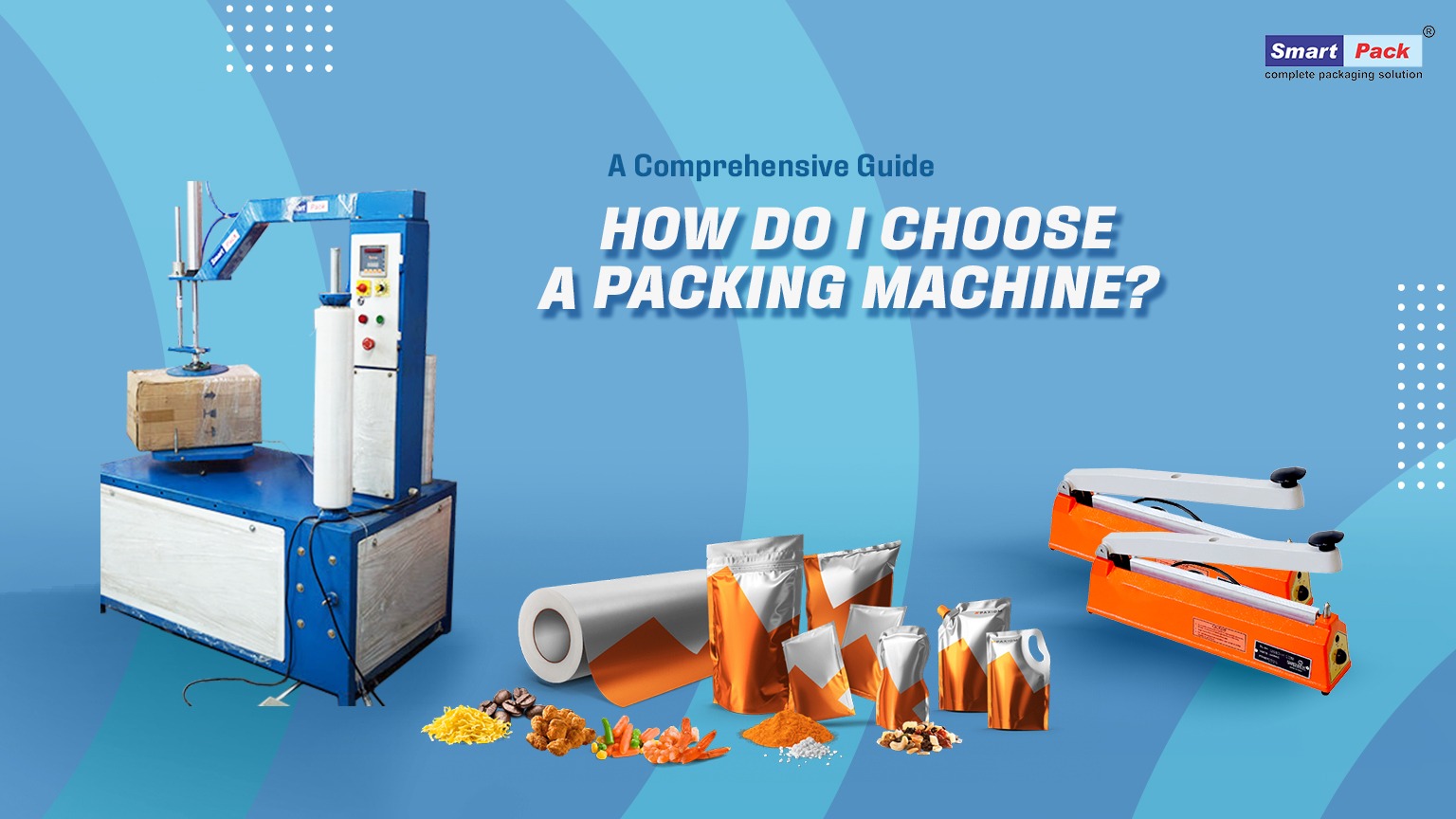Introduction
Choosing the right packing machine is a critical decision that can impact productivity, cost-effectiveness, and product quality. With an overwhelming variety of packing machines available on the market, finding the perfect fit for your specific needs can be challenging. This blog will guide you through the essential factors to consider when choosing a packing machine, ensuring a seamless and successful packaging process for your business.
1. Identify Your Packaging Needs
The first step in selecting a packing machine is to understand your packaging requirements thoroughly. Consider factors such as the type of products you handle, their size and shape, the desired packaging material (e.g., boxes, bags, bottles), and the required output rate. Identifying your specific needs will help you narrow down the options and focus on machines that can handle your unique packaging challenges effectively.
2.Research Different Types of Packing Machines
There is a wide array of packing machines available, each designed to suit specific packaging tasks. Familiarize yourself with the various types of machines, including:
- Form-Fill-Seal (FFS) Machines
- Automatic Carton Sealers
- Vacuum Packaging Machines
- Shrink Wrapping Machines
- Filling Machines
- Form-Fill-Seal (FFS) Machines: These machines create packages from roll-fed packaging materials, fill them with the product, and then seal them. FFS machines are commonly used for products like snacks, granules, and liquids.
- Automatic Carton Sealers: Ideal for sealing cartons using adhesive tape or hot melt glue, these machines are perfect for high-volume applications.
- Vacuum Packaging Machines: These machines remove air from the package before sealing, extending the shelf life of products and preventing spoilage.
- Shrink Wrapping Machines: Used to wrap products in shrink film, these machines are commonly employed in the food and beverage industry.
- Filling Machines: Suitable for accurately measuring and filling products such as liquids, powders, or granules into containers
3. Consider Machine Specifications and Features
Once you’ve narrowed down the type of packing machine you need, pay attention to its specifications and features. Some critical factors to consider include:
1.Speed and Output Capacity: Evaluate the machine’s speed in terms of units packaged per minute and ensure it aligns with your production requirements.
2.Flexibility and Versatility: Determine if the machine can handle various product sizes and types to accommodate potential changes in your product line.
3.Automation and Integration: Consider the level of automation and whether the machine can integrate with your existing production line, enhancing overall efficiency.
4.Energy Efficiency: Look for machines that are energy-efficient to reduce operational costs and environmental impact.
5.Maintenance and Service: Ensure that the machine is easy to maintain and that you can access reliable technical support when needed.
4. Quality and Durability
Investing in a high-quality and durable packaging machine is essential for long-term success. Inferior machines may lead to frequent breakdowns, production delays, and increased maintenance costs. Research reputable brands with a track record of providing reliable and durable machines. Reading customer reviews and seeking recommendations from industry peers can provide valuable insights into the machine’s performance and durability.
5. Safety Features and Compliance
Safety should be a top priority when choosing a packing machine. Look for safety features such as emergency stop buttons, safety guards, and interlocking systems. Additionally, ensure that the machine complies with industry safety standards and regulations to avoid any legal or operational issues.
6. Cost Analysis:
While cost is a significant consideration, it should not be the sole determining factor. Consider the total cost of ownership, including initial purchase price, installation, maintenance, and operational costs. A machine with a higher upfront cost but lower maintenance and operational expenses may be more cost-effective in the long run.
7. Request Demonstrations and Samples:
Before finalizing your decision, request demonstrations from potential suppliers to observe the machine’s performance firsthand. Additionally, ask for samples of your product packaging to assess the quality and suitability of the machine for your specific needs.
Choosing the right packing machine is a crucial investment for any business involved in packaging and distribution. By identifying your packaging needs, researching different types of machines, considering specifications and features, prioritizing quality and safety, conducting a cost analysis, and requesting demonstrations and samples, you can make an informed decision that optimizes your packaging process, enhances productivity, and ensures customer satisfaction. Remember, taking the time to thoroughly assess your options will lead to a successful and seamless integration of a packing machine into your production line, providing long-term benefits and a competitive advantage in the market.

